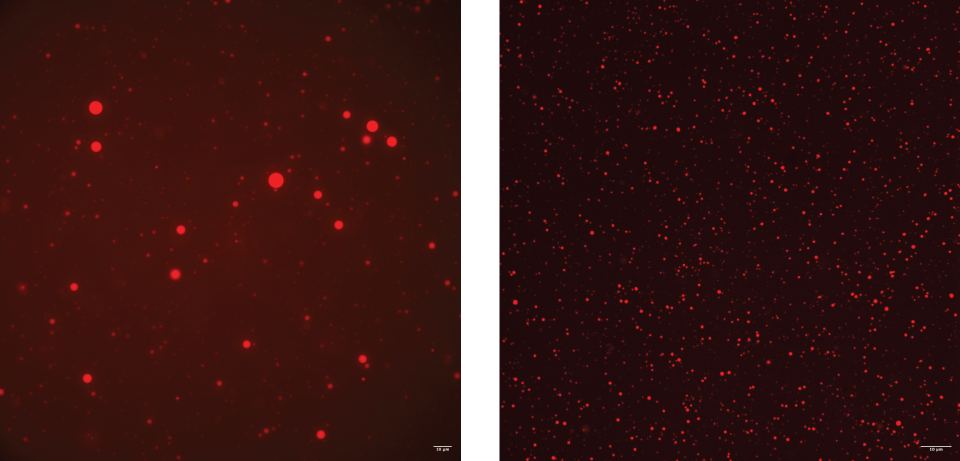Take a dive into the world of RNA-protein droplets

When RNA and proteins interact, they can form droplet-like structures in our cells, which are currently the subject of intensive research. Errors in droplet formation can lead to diseases. Also, these droplets could have something to do with the origin of life.

Ribonucleic acids (RNA) are important information and function carriers of a cell. Their interactions with proteins are essential for our cells in many ways, and mistakes therein can lead to diseases. A fascinating aspect of RNA-protein interactions are the droplet-like structures they form in our cells, similar to oil droplets in water. These droplets are special because – unlike the nucleus or other organelles in the cell – they are not surrounded by a membrane.
Currently, these droplets are being intensively researched. Come to our stand to learn what is already known about their function, how errors in droplet formation contribute to diseases such as amyotrophic lateral sclerosis (ALS), and what these droplets might have to do with the origin of life. We will also show you what holds RNA and proteins together at the molecular level and how researchers are able to create atomic resolution images of these interactions.
Discuss with the researchers at the stand and learn about the experiments they use to tackle individual questions and how this knowledge can contribute to therapy development. Explore how RNA and proteins interact at the atomic level and get an idea of the properties of the biomolecular droplets yourself.
Further information about RNA: molecool.ch
Also, at the booth, there will be experiments for children, which deal with the phenomenon of phase separation as shown in the video below.
